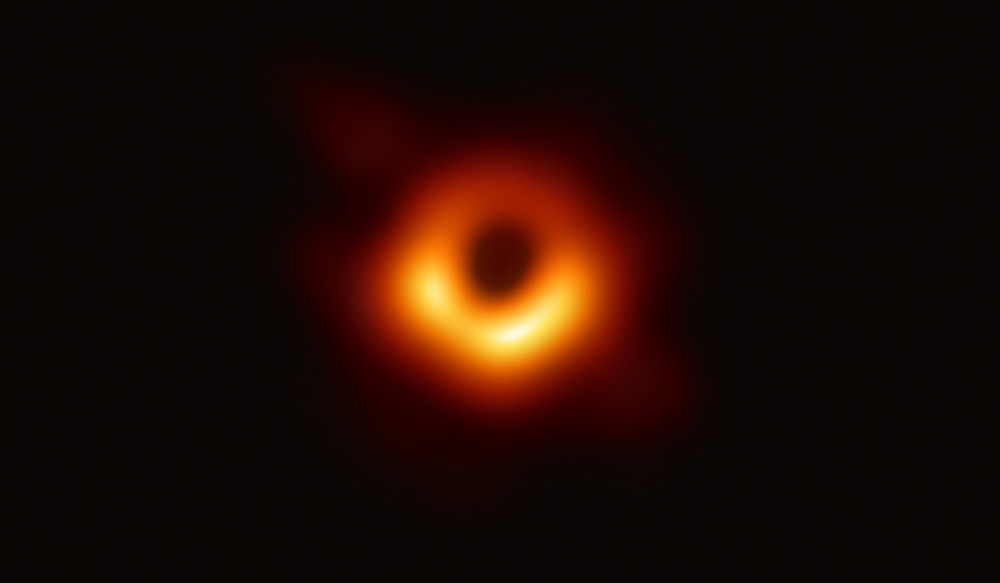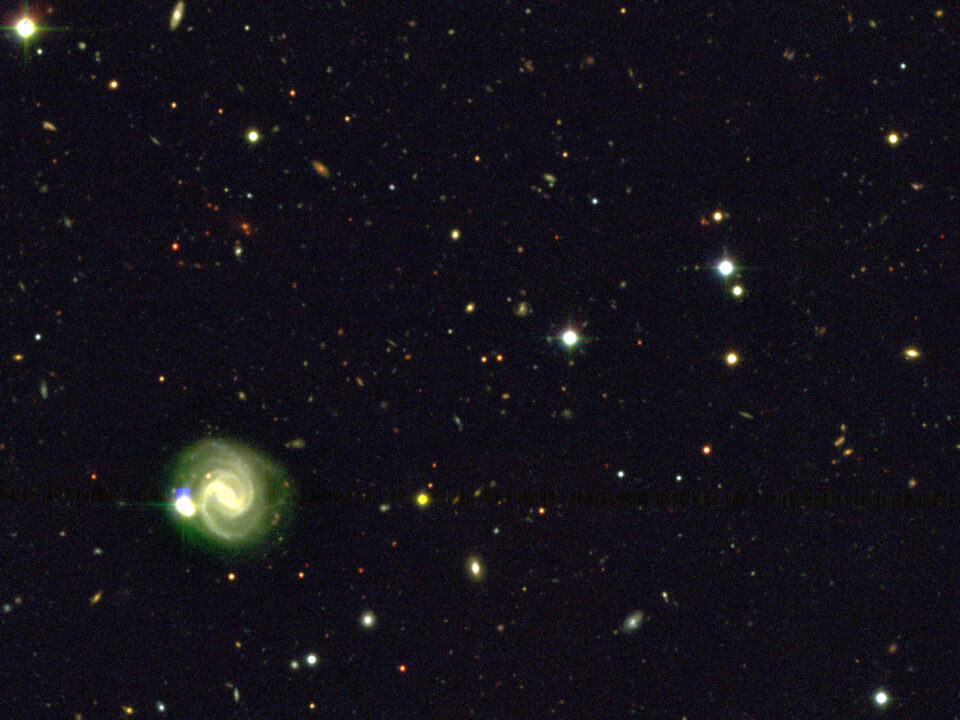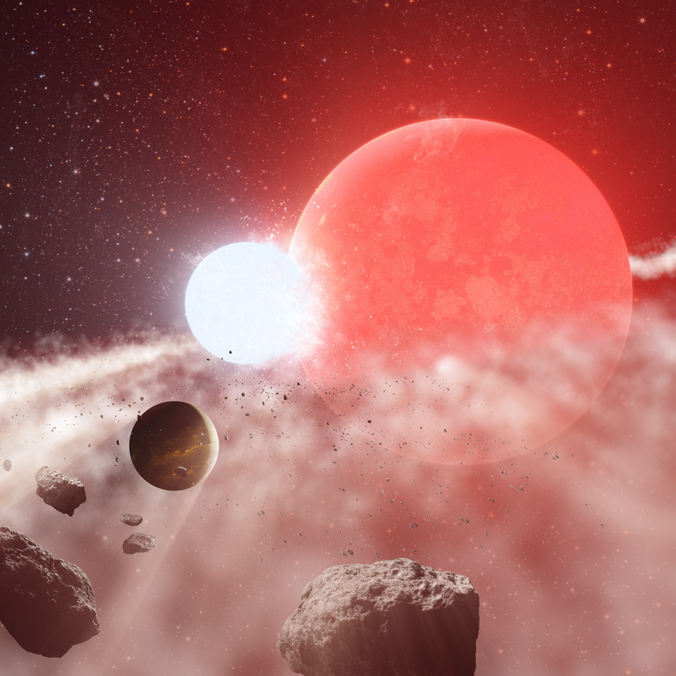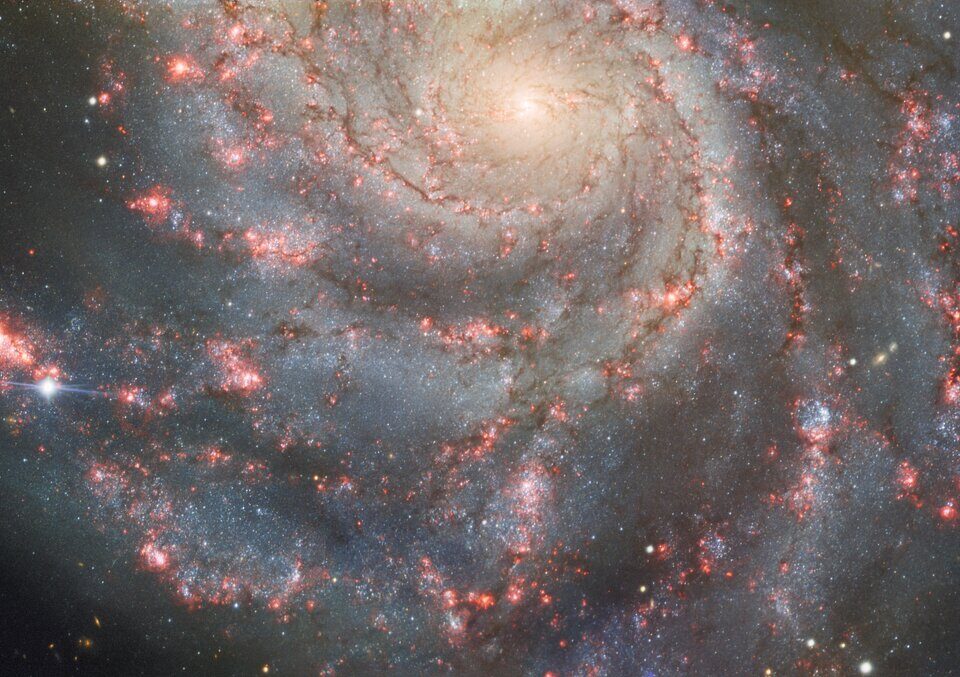Two Maunakea Telescopes Play Critical Role in Producing World’s First Image of a Black Hole
Extrasolar Planets Discovery
October 5, 2018
Let’s commit to safety for all atop Maunakea
July 15, 2019The Event Horizon Telescope (EHT) — a planet-scale array of eight ground-based radio telescopes forged through international collaboration — was designed to capture images of a black hole. In coordinated press conferences across the globe, EHT researchers revealed that they succeeded, unveiling the first direct visual evidence of the supermassive black hole in the centre of Messier 87 and its shadow. The shadow of a black hole seen here is the closest we can come to an image of the black hole itself, a completely dark object from which light cannot escape. The black hole’s boundary — the event horizon from which the EHT takes its name — is around 2.5 times smaller than the shadow it casts and measures just under 40 billion km across. While this may sound large, this ring is only about 40 microarcseconds across — equivalent to measuring the length of a credit card on the surface of the Moon. Although the telescopes making up the EHT are not physically connected, they are able to synchronize their recorded data with atomic clocks — hydrogen masers — which precisely time their observations. These observations were collected at a wavelength of 1.3 mm during a 2017 global campaign. Each telescope of the EHT produced enormous amounts of data – roughly 350 terabytes per day – which was stored on high-performance helium-filled hard drives. These data were flown to highly specialised supercomputers — known as correlators — at the Max Planck Institute for Radio Astronomy and MIT Haystack Observatory to be combined. They were then painstakingly converted into an image using novel computational tools developed by the collaboration.
James Clerk Maxwell Telescope & Submillimeter Array Help Unlock One of the Universe’s Greatest Mysteries
Two of the world’s most powerful telescopes, located atop Maunakea, played a vital role in producing the world’s very first image of a black hole.
Hawai‘i-based James Clerk Maxwell Telescope (JCMT) and Submillimeter Array (SMA) are part of the unprecedented Event Horizon Telescope (EHT) project. JCMT is operated by the East Asian Observatory; SMA is operated by the Smithsonian Astrophysical Observatory and the Academia Sinica Institute of Astronomy and Astrophysics.
In April 2017, a groundbreaking observational campaign brought together eight telescopes at six locations around the globe to capture an image of Pōwehi, a supermassive black hole at the center of the Messier 87 galaxy.
“Maunakea makes this discovery and the spectacular image of Pōwehi possible,” said Dr. Jessica Dempsey, deputy director of East Asian Observatory’s James Clerk Maxwell Telescope. “It’s perfect remote position, and the dry conditions on Maunakea’s summit, allow JCMT and SMA to collect the tiny amount of light that only touches our planet in a few very special places. Like the mountain itself, every drop of light we gather is precious.”
Astronomers collaborated with renowned Hawaiian language and cultural practitioner Dr. Larry Kimura for the Hawaiian naming of the black hole. Pōwehi, meaning embellished dark source of unending creation, is a name sourced from the Kumulipo, the primordial chant describing the creation of the Hawaiian universe. Pō, profound dark source of unending creation, is a concept emphasized and repeated in the Kumulipo, while wehi, or wehiwehi, honored with embellishments, is one of many descriptions of pō in the chant.
“It is awesome that we, as Hawaiians today, are able to connect to an identity from long ago, as chanted in the 2,102 lines of the Kumulipo, and bring forward this precious inheritance for our lives today,” said Dr. Kimura, associate professor at University of Hawai‘i at Hilo Ka Haka ‘Ula o Ke‘elikolani College of Hawaiian Language. “To have the privilege of giving a Hawaiian name to the very first scientific confirmation of a black hole is very meaningful to me and my Hawaiian lineage that comes from pō, and I hope we are able to continue naming future blackholes from Hawai‘i astronomy according to the Kumulipo.”
The SMA and JCMT telescopes are key members of the Event Horizon Telescope project, which links together strategically placed radio telescopes across the globe to form a larger, Earth-sized telescope powerful enough to see a Lehua flower petal on the moon.
“SMA and JCMT, working together as one ‘ohana, pioneered the revolutionary technique to see such tiny and faint objects and they were critical in capturing the image of Pōwehi,” said Geoff Bower, chief scientist for Hawai‘i operations of Academia Sinica Institute of Astronomy and Astrophysics. “The spirit of aloha required to unite scientists and observatories across the world was born right here on Maunakea. And powerful new capabilities coming soon at SMA and JCMT mean that Hawai‘i’s groundbreaking contributions to understanding our universe are just beginning.”
The participation of the SMA and JCMT as the far-west anchor point of EHT’s telescope array allowed astronomers to effectively observe and “photograph” supermassive black holes, among the most mysterious and powerful objects in the cosmos.




